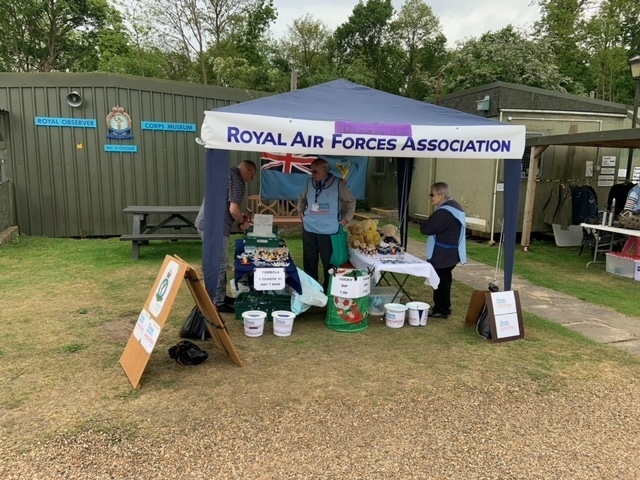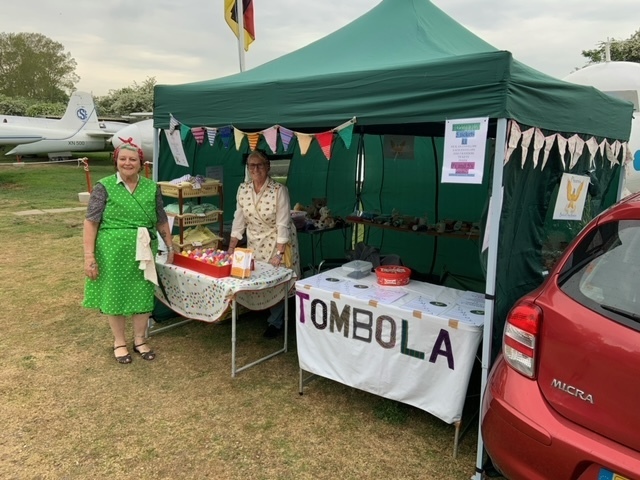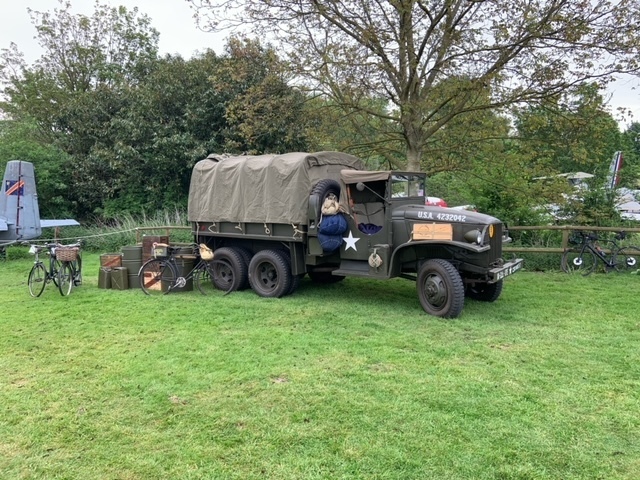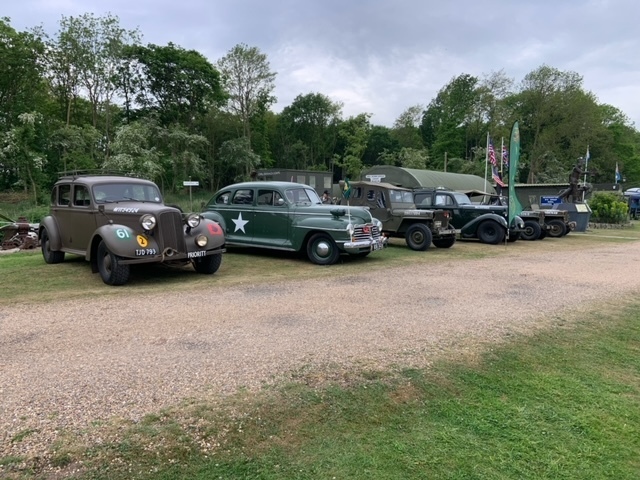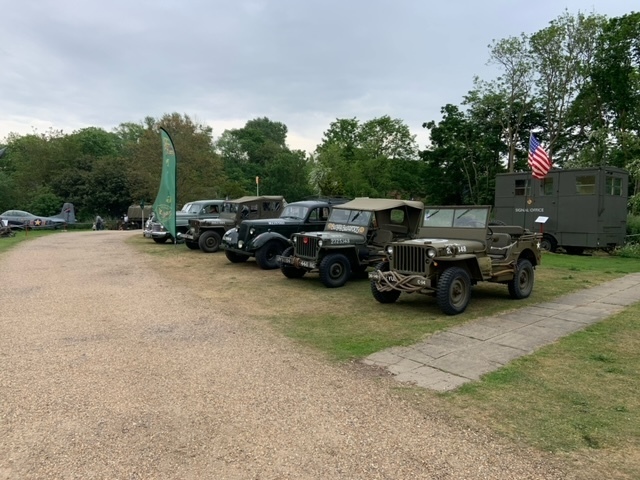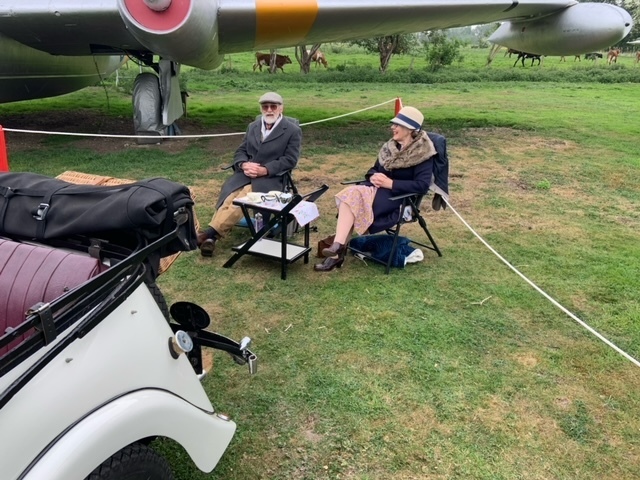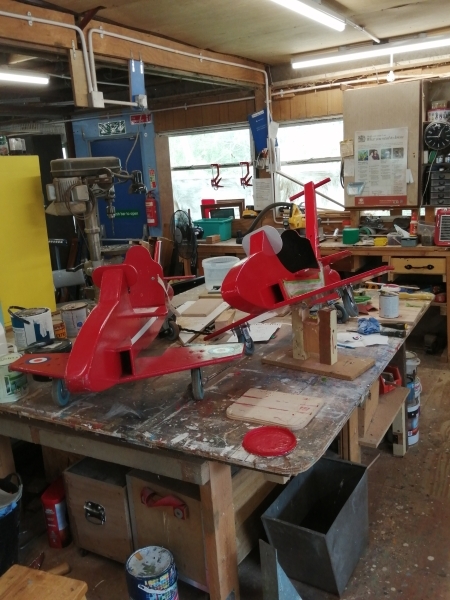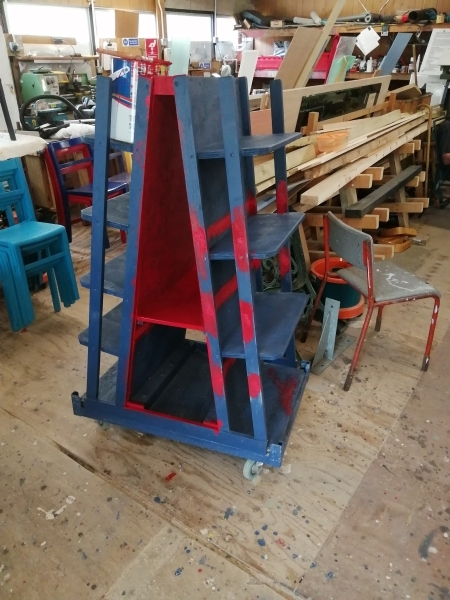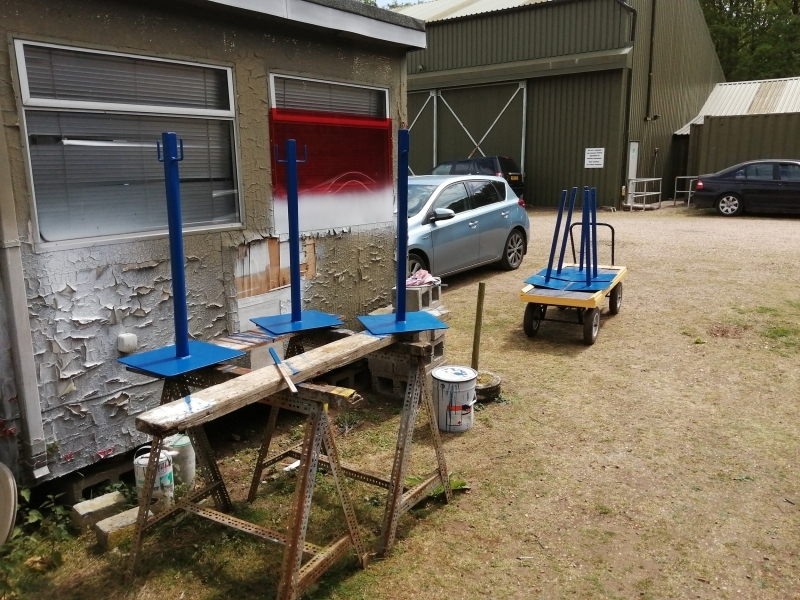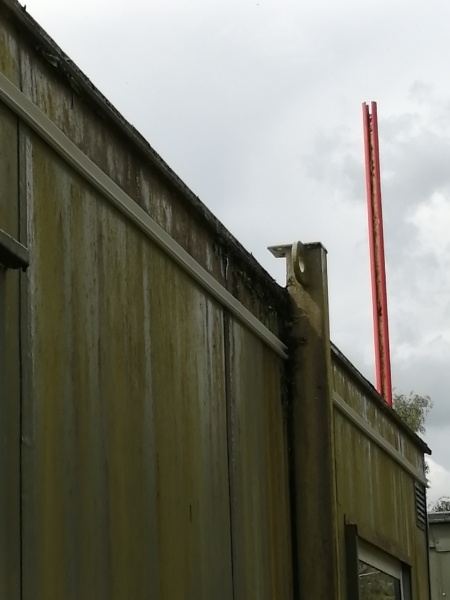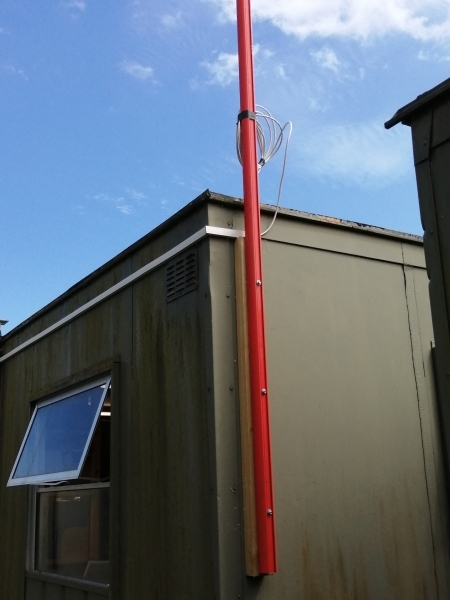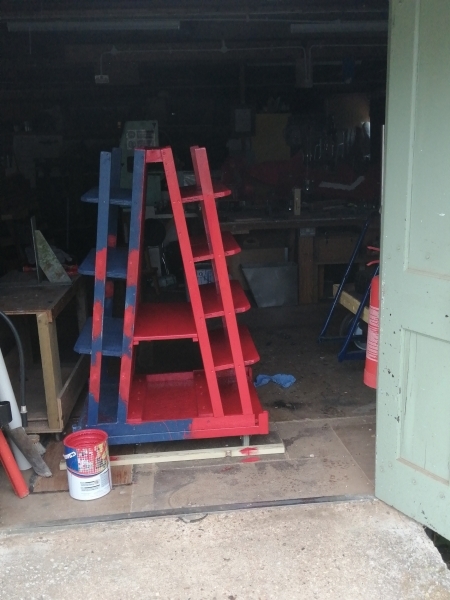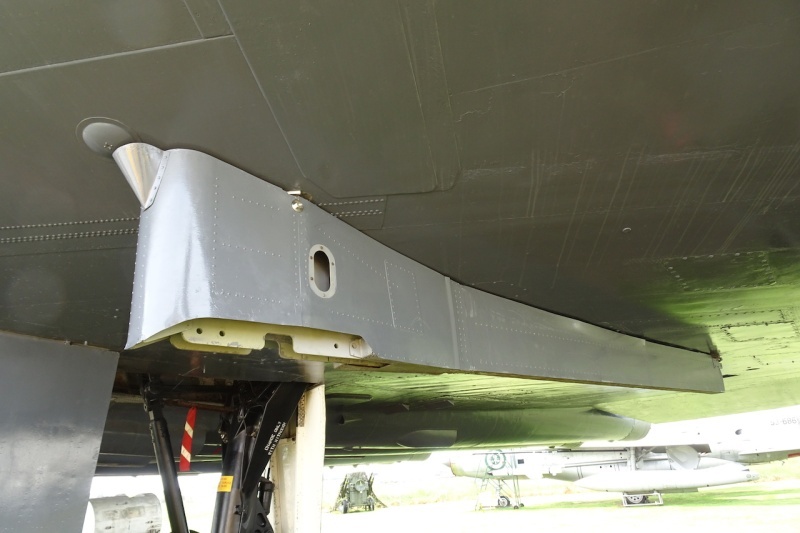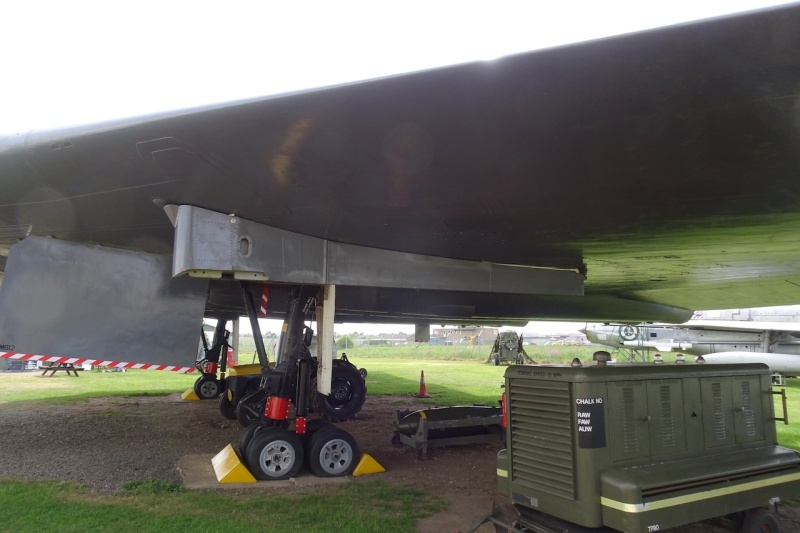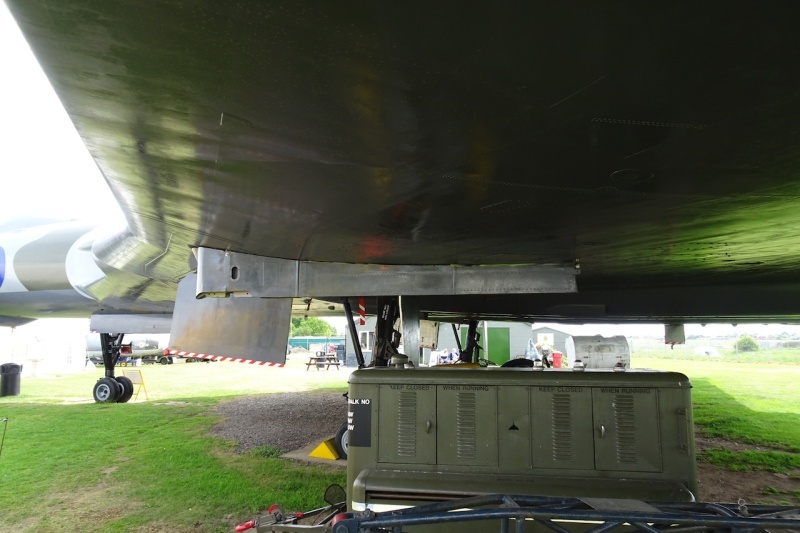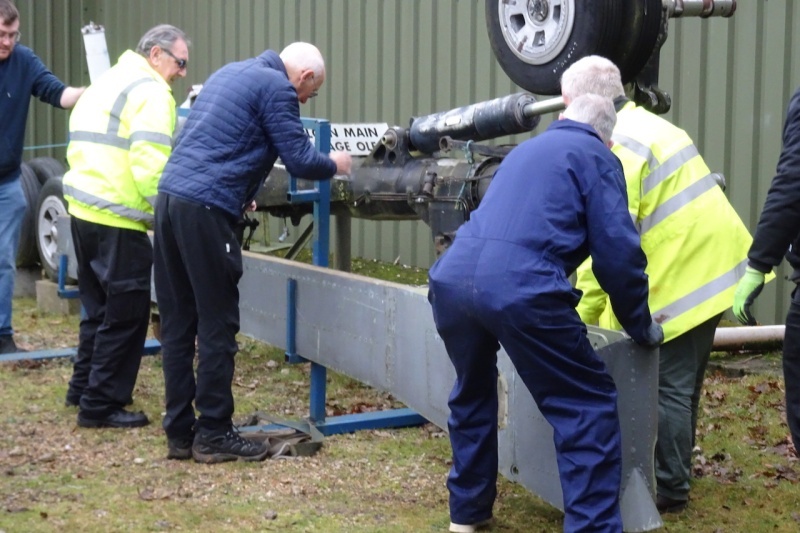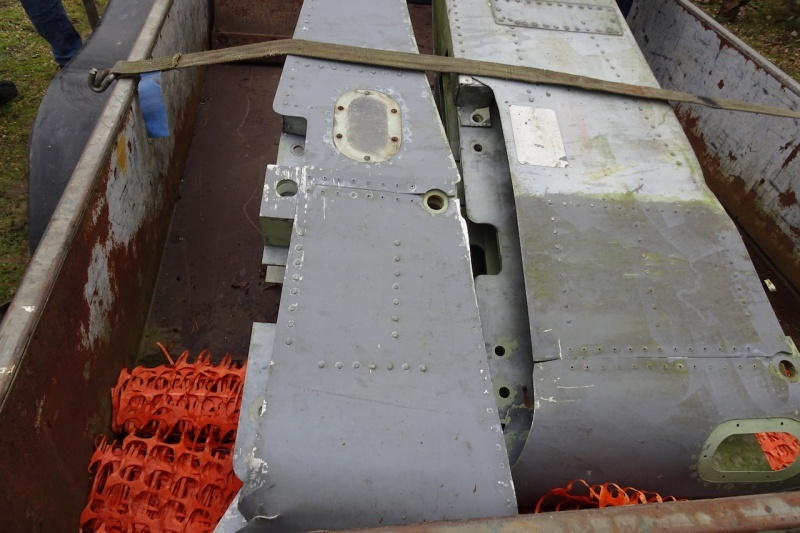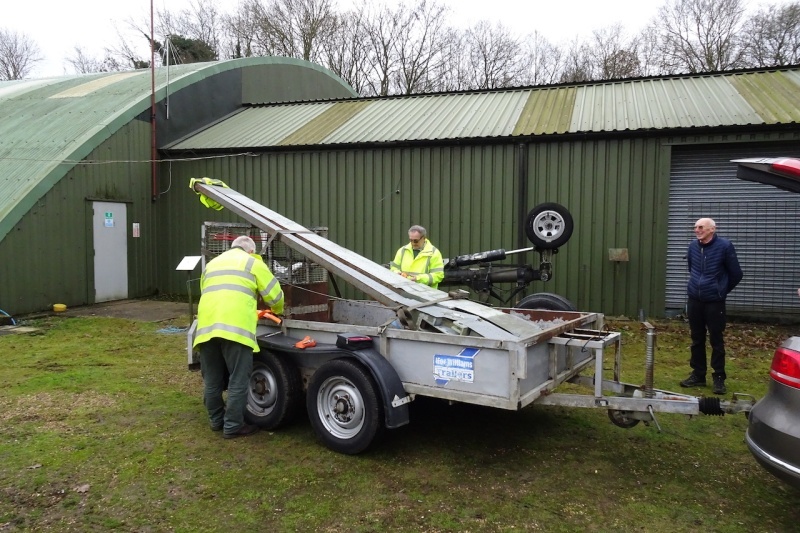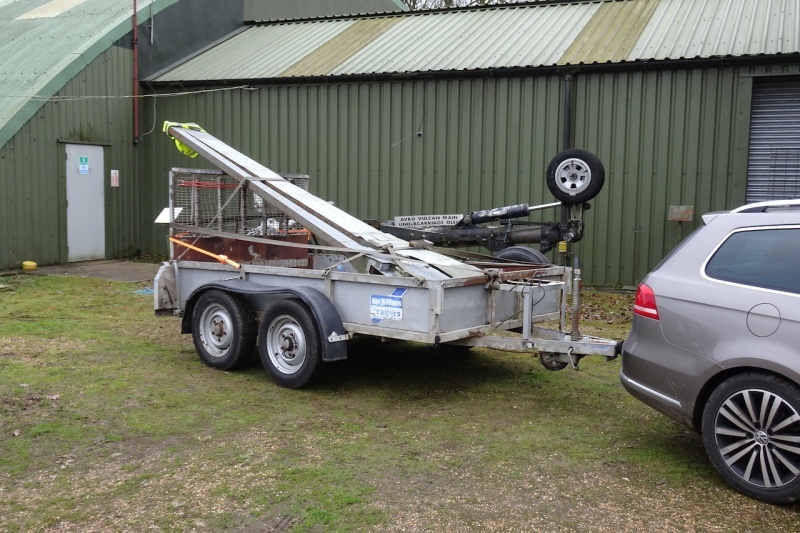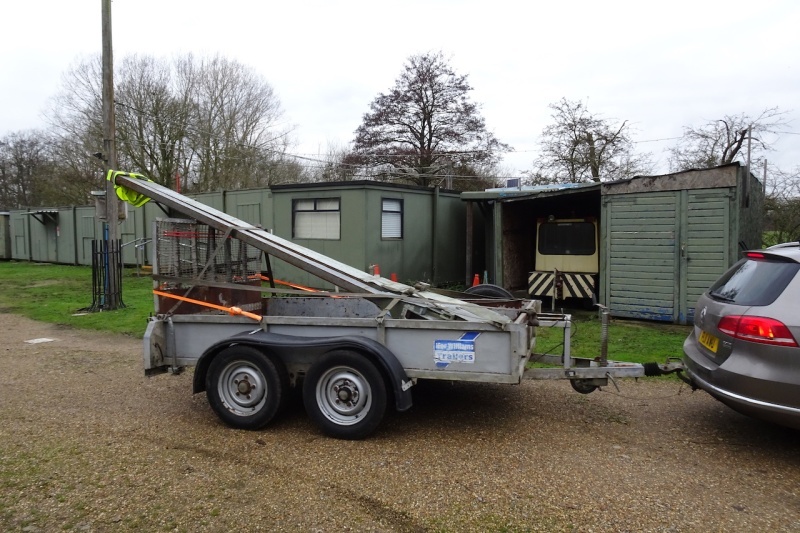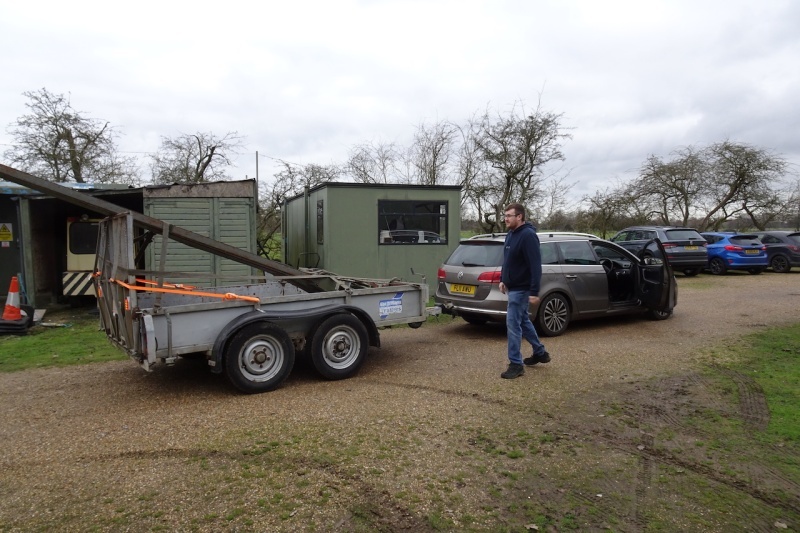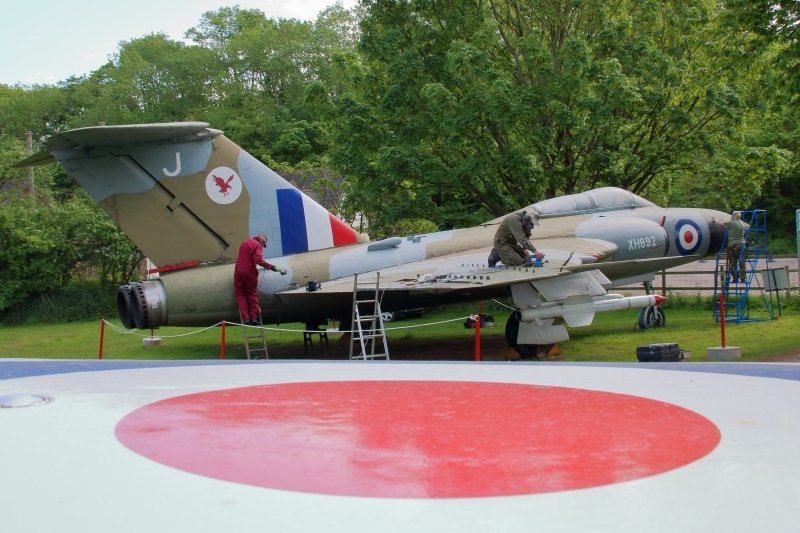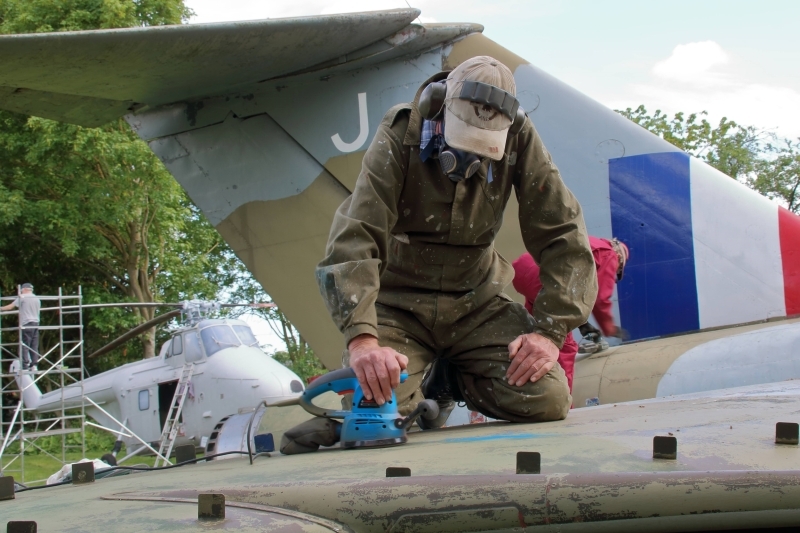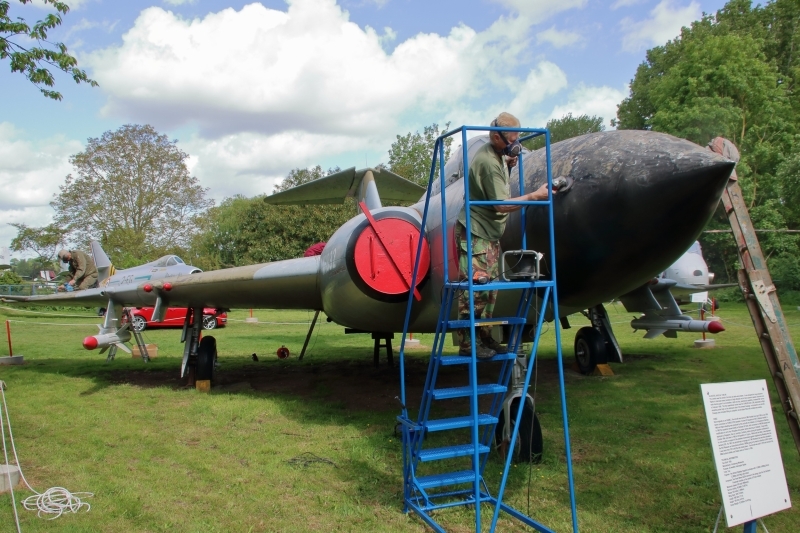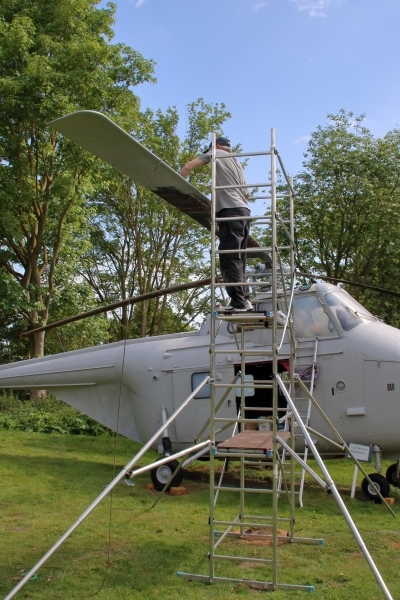NASAM Update as of the 25th May 2022
[joli-toc]
General Updates
In this edition of the Online Flier, we start with an update from Graham in Archives. This much-overlooked and under-reported section of the Museum contains a fascinating insight into both early aviation and personal effects and reports, as well as art and ephemera that have been donated to the museum over the years. Some of the donated artwork can be seen in the NAAFI cafe, where the artwork is rotated from time to time.
Also in this edition, the Painters continue their work both outdoors and indoors in keeping the museum and the aircraft spruced up. The Chippies also continue with their projects to enhance the displays and also with their efforts to make and mend as much as possible.
Cliff, one of the Volunteers visited the Norwich Aviation Museum where he saw the Vulcan pylons, on loan from NASAM fitted to the Norwich Avro Vulcan XM612. The collection of these pylons was reported in the Online Flier dated 28/12/2021. Photos from Cliff are in his report below along with the collection photos.
We were asked this week on Facebook if we had any photos from the 40s Themed Day At The Museum (Sunday 15th May) I am pleased to say that John S sent in a few images taken during that special event day which I have included immediately below. Thanks John ……
I also have some images from the Aviation Art Day At The Museum (Sunday 22nd May) sent to me by Steve which I am now resizing. I will publish these in a new blog in a few days time.
My thanks go to all the contributors who have provided articles for this edition.
Pete S
(Photos) 40s Themed Day At the Museum
![]()
From the NASAM Archives
A Collection of Everything
Keeping track of the Museum’s Collection of Everything (the CoE) is a never-ending task. Nearly 40,000 items are listed on the electronic inventory, but recent rummaging has shown that there are plenty more that, while included in the handwritten records, have yet to be added to the database. This work is in hand with storage containers, the main book library and the Magazine Store all coming under close scrutiny for items that have, so far, escaped the administrative net. With new items being accepted by the Museum all the time, the job will be continuous and made much more entertaining when already recorded items are shuffled to a new display location. Finding out what we have in the CoE is just part of the job – knowing where it is at any particular time will be a never-ending chase; but if we don’t know that we have it we can’t put it out on display. The list is important!
Hidden deep in the storage units are some real gems. From broken WWII Hurricane & Spitfire parts to rare books, from small explosive devices (made safe) to booklets advising us on how to survive the effects of small explosive devices we seem to have a little of everything. If this survives the Editor’s word cull then irregular, in every sense, updates ‘From the Archives’ may get into print.
Tee Emm
 Recently discovered in the Magazine Store is a collection of forty-two A5 sized booklets in RAF blue covers – called ‘Tee Emm’. Standing for ‘Training Memoranda’ and endorsed by the then Chief of the Air Staff, they are gentle but insistent guidance to wartime Aircrew on how to safely go about their business.
Recently discovered in the Magazine Store is a collection of forty-two A5 sized booklets in RAF blue covers – called ‘Tee Emm’. Standing for ‘Training Memoranda’ and endorsed by the then Chief of the Air Staff, they are gentle but insistent guidance to wartime Aircrew on how to safely go about their business.
They also bring Pilot Office Prune and the general practice of ‘Prunery’ to the wider world for the first time, and the humour with which the air safety messages are delivered is a thing of beauty. Issued monthly, the advice to Pilots, Navigators et al grows into an irreverent record of the goofs, pitfalls and ‘the campaign against finger trouble’ fought by the junior service.
The first copy we have in the CoE is Issue No 2, dated May 1941 – the BEF withdrawal from France is done and the Battle of Britain has run its course. No congratulatory back-patting here though – the flight safety message is as strong as ever. The following is taken from that issue:
TEE EMM – Issue 2 – May 1941
THE MONTH’S BAD ARITHMETIC
 ” Bad Arithmetic” was a phrase coined by that brilliant fighter of the last war (referring to the First World War – Ed), Major “Mick” Mannock, V.C. Frequently, a British pilot, returning after shooting down a German plane, would crash his own by careless landing or “stunting” to celebrate his victory. This turned his bag of One into One-Minus-One, or Nought, which, Mannock said was “not good arithmetic.”
” Bad Arithmetic” was a phrase coined by that brilliant fighter of the last war (referring to the First World War – Ed), Major “Mick” Mannock, V.C. Frequently, a British pilot, returning after shooting down a German plane, would crash his own by careless landing or “stunting” to celebrate his victory. This turned his bag of One into One-Minus-One, or Nought, which, Mannock said was “not good arithmetic.”
How much worse arithmetic is it to mark up a “minus-one” through carelessness when under training without even having had your “plus-one” first?
Here are some recent accidents, all unfortunately due to human, not mechanical failure. Read, mark, learn and rigidly avoid! Keep out of these “accident headlines”.
Petrol Cap Costs Six Lives
After a large four-engine aircraft had been refuelled, someone forgot to replace the cap of one of the petrol tanks, someone else forgot to check up and see that they were all on. This valuable aircraft, as a result, was completely destroyed worse still, an experienced crew of six were killed,
Mother Indirect Cause of Son’s Death
A mother was very proud of her son in the Air Force, too proud, unfortunately; for she asked him to fly over the house so that she could see him and point him out to her friends. The pilot did so, in flat disobedience of the orders about low flying; moreover, to impress his mother still further he indulged in a little stunting to show how much at home he was in the air. He crashed straight into the ground at high speed and killed himself.
Took Chance Which Didn’t Come Off.
A pilot was taxying his aircraft across the aerodrome when he saw an obviously suspicious bit of ground ahead. He was too slack to get out and inspect it. He said to himself, “Oh, I expect it’ll be all right” and went ahead. It wasn’t. He bogged and damaged a valuable plane.
Lost Head: Lost Aircraft
Owing to a jammed lever a Spitfire pilot, about to land, found himself unable to select the undercarriage down. He made three circuits and then landed with his wheels up. This pilot damaged his plane as a result of losing his head. He did not report his trouble on R/T, nor was there any real reason after a mere three circuits to assume that the lever was so immovably jammed that he could never get it to work and must, therefore, crash his aircraft. He should have kept his head and persevered.
What Could be Worse Than This?
Coming down to land, a pilot:
- came in at right angles to the ‘T’
- failed to put his flaps down
- overshot badly, but failed to go round again
- touched down where the aircraft should have finished the landing run
- landed with his brakes fully on
- had not made his passenger wear a safety belt, and so flung him out and killed him.
There was, in short, little else wrong that he could have done. It was called sheer carelessness; it might almost have been called sheer inefficiency
More to Come
There will hopefully be more from P/O Prune, A/C Plonk and the wartime team – and from the Archive of the CoE, in due course.
Graham M
![]()
Chippies Update
17th May – Red Arrows Display in the Chippies Workshop!
That grabbed your attention. How did everyone else miss it? Well, Michael F and Ash trundled the completed Lightning Tail Stand over to the Main Hanger and left it under the Lightning. We then collected the old Red Arrows push-along children’s plane, whose handle had come off, and returned it to the Workshop ready for refurbishment with a new, fixed handle like the new one on the plane Dave H is just completing. The old one was deposited on the workbench and I noticed that together they looked just like they were taking part in a display, so I grabbed the camera…. (See Red Arrows Chippies Display 01)
We then had a brief foray into the front field, asked by the Painters Mark and Barry to provide a new tail skid for the Whirlwind. While measuring it for size, Michael also confirmed that the tailplane is less than six feet off the ground using his head.
Tug decided that he ought to paint chairs, so set to again, wondering when this never-ending Forth Rail Bridge job would end. Morris skipped on the chairs and headed for the bric-a-brac book stand rebuilt last week. While he tried to make it Post Office red, it has many nooks and crannies that seem to take forever (see Bric-a-Brac 05). A job for a rainy day, really.
Ivor joined the Chippies painters today taking over a trolley to give chain-barrier stands from the Main Hangar a coat of Dark Blue (see Chain Barrier Stands 01).
Ash and Michael turned to a long-standing task: setting up the Museum WiFi. Some months ago they raised masts for the between building radio network. Our radio expert is available at the end of May so we started wiring up between the masts and the WiFi router points. Bryan the Leckie had got us some cable trunking so we started on the Archive Building. In true telecom company style, we left the installed cable neatly coiled at the end of the pole – we are professionals (see WiFi Poles 05 and 06).
We then looked at what we had to do in the shop. After consulting David the Leckie and PAT Test Paul about the shop wiring and WiFi already in place, we decided the cable distance from pole to the router was too long and anyway it was too hot outside to do any more strenuous work. At this point, the inevitable tea break occurred while we debated what to do next. We settled on moving the pole to the corner of the shop …. next Tuesday, and went home.
9th May
Well, we thought, that’s Dave H, Les W and Michael F, we can get on with things today. Then Bryan the Leckie turned up and the power went off. Then the heavens opened. So Les carried on painting chairs and Michael painted the bric-a-brac book stand (see Bric-a-Brac 06). And Ivor painted chain-barrier stands. And Dave pottered about. In the semi-dark. And there was no tea, which almost caused a mutiny.
After lunch, Bryan turned on the lights and stopped the mutiny when the kettle started boiling. But since we’d started painting, we had better finish it off. So we did.
Such is the life of a volunteer at the Museum, it’s not all sunshine and roses.
But some brighter news – Les finished the first coat on the last of the chairs and was even talking of taking some back to the storage area by the stage.
Michael F
(Photos) Chippies Update
![]()
Vulcan Underwing Pylons On Loan
At the City of Norwich Aviation Museum, today to collect some Stirling wreckage so had a look at their Vulcan now with underwing pylons fitted. The pylons are on loan from NASAM and were collected by CNAM last year but they only got them fitted yesterday. The aircraft is now ready for their Falklands event at the weekend. They plan to make a replica Martel missile and jammer pod if they are not able to source originals to complete the display.
Cliff
(Photos) Vulcan Underwing Pylons Fitted
(Photos) Vulcan Underwing Pylons Being Collected Dec 2021
![]()
Paint Team Update
17/5/22 – Flattening the Flat Iron!
Yes folks, with Spring rapidly disappearing and soon to be replaced by Summer, the Skipper (Cliff) decided enough time had been spent on washing exhibits and that we should actually get on with some painting! But as we all know, painting is always preceded by an awful lot of prep. And thus it was that the hitherto ‘washy boshy crew’ (Gwen, Ian and Cliff) left the waterproofs in the car this week and broke out the sanders and grinders to start prepping the Javelin (service nickname, ‘Flat Iron’). Being a sizeable beast, there was plenty of room for everyone (see Javelin Repaint 01, taken over the Meteor roundel). So, Cliff took up position on the starboard wing (see Javelin Repaint 02), with Ian working his way up the starboard side of the fuselage and Gwen starting on the nose (see Javelin Repaint 03). At the end of the day, the general consensus was that the airframe was in pretty good nick and that flattening any lifting paint was not too arduous a task (unlike the Meteor and Whirlybird). The only problemo encountered during the day was on the fibreglass nose cone, which was pretty thin in places. Consequently, a request was put out to John S. to come and effect some fibreglass repairs.
Meanwhile, next door to the ‘Flat Iron’, the ‘B’ Team (Mark and Barry) set about priming the rotor blades on the Whirlybird (see Whirlwind Repaint 17). By the end of the day, all three blades had been covered in grey primer, along with a number of spots on the fuselage that needed re-tidying after the winter break. During this process, it was discovered that a family of blue tits were nesting inside the fuselage just behind the rear skid. Unfortunately, having been spooked by the humans, two fledglings decided to abandon the nest, while the parents were nowhere to be seen. Mark managed to scoop up the sole survivor and place him in the cup of the skid. Hopefully, the parents will return soon to help the little fella out. Talking of skids, the skid on the Whirlybird, being cup-shaped and holding water, is severely corroded, so the boys started to solution-ise a remedy. After a quick brainstorm (that can’t have taken very long! – Ed.) the boys called in the Chippies for assistance. Michael and Ash were soon on the scene, taking measurements so that they could carve out a wooden replacement for us – top chaps!
Next week might see the commencement of top coating the Whirlybird, subject to the weather playing nicely of course (current forecast not encouraging).
Barry
(Photos) Painters Update
The Repeat Info
The repeat information is still here I’m afraid, and I make no apologies for keeping his section in our blog. We are a charitable organisation relying on monies from the public to keep us going. Any help we receive is gratefully accepted and enables the museum to continue in our mission “To conserve, preserve and promote the history of aviation in East Anglia, whilst providing a fun, family-friendly and interactive museum, promoting education and remembrance of the events of the past“.
Are you thinking of helping ??
 We obtain most of our finances by donations and by membership fees. We save money by having a dedicated group of volunteers that keep the museum and the exhibits both manned and maintained. We hope therefore a few people may consider helping in the ways below.
We obtain most of our finances by donations and by membership fees. We save money by having a dedicated group of volunteers that keep the museum and the exhibits both manned and maintained. We hope therefore a few people may consider helping in the ways below.
There are three easy ways to help: Help by becoming a Museum Member, also by Volunteering to help at the museum, or by Donating to assist in our running costs. Please click on the appropriate button below to access the appropriate information:
Keep Up To Date
![]() To keep up to date with further information, please keep an eye on our Social Media (see the Social Media buttons at the foot of this blog) or click on the button below to be notified by email of any upcoming changes by seeing the latest blog.
To keep up to date with further information, please keep an eye on our Social Media (see the Social Media buttons at the foot of this blog) or click on the button below to be notified by email of any upcoming changes by seeing the latest blog.

